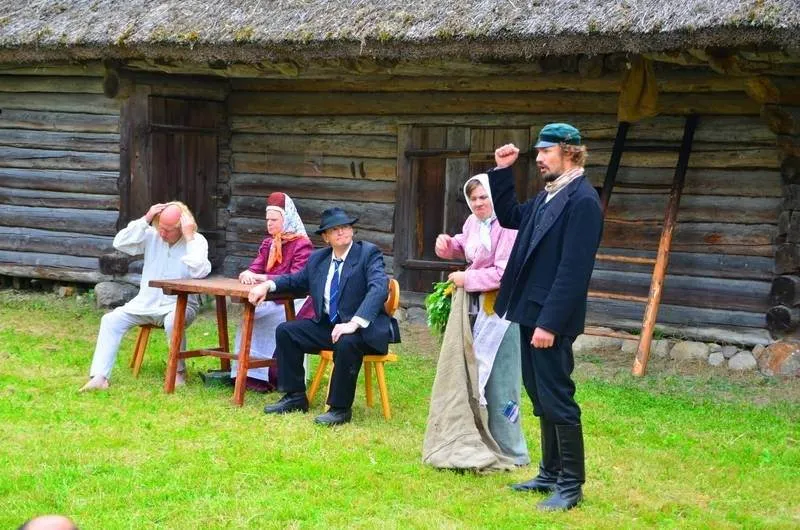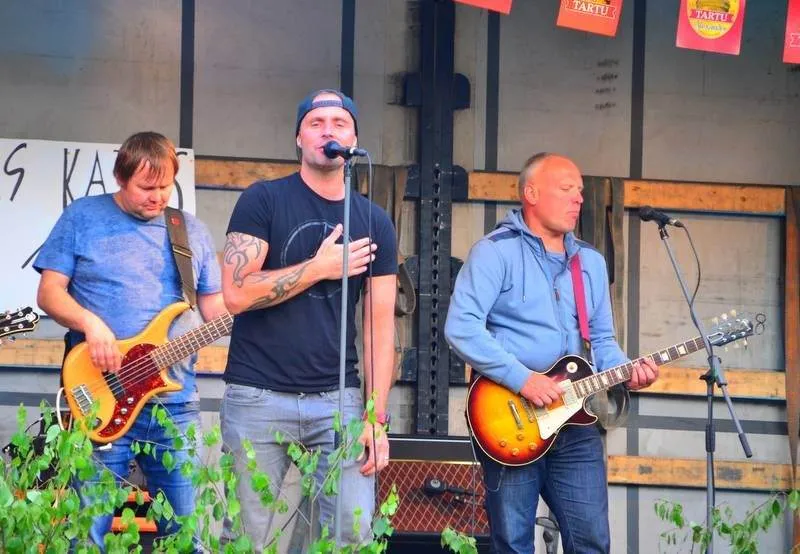
This one’s kind of a two-for-one sort of deal — the Estonian Open Air Museum (Eesti Vabaõhumuuseum) is home to one of a number of Midsummer’s Eve (Jaanipäev) holiday celebrations across the country. It’s timed to celebrate the summer solstice in a country that can see as little as six hours from sunrise and sunset during the winter. During the summer months, sunrise is around 4am and sunset is around 10:30pm… even after midnight, there’s still a fair bit of light in the sky, so it never gets completely dark…
While you’re in Estonia, go check out what to do in Parnu!

The modern museum holding reconstructions of centuries-old buildings opened in 1964, but talk of opening an open air museum was around decades earlier. Work and plans were disrupted by the two World Wars, but today’s museum includes 74 buildings.
The Midsummer Eve’s festival offered up a chance to both see the sights and take in the festivities, and it delivered with a nice, classy mix of events. As you might expect from a site focused on history, there were plenty of reenactments happening (though all happened in Estonian only, making it difficult for the tourists to understand what was happening).

Some of the earliest roofs were essentially straw.

In a part of one building that’s guaranteed to be a big hit with school field trips everywhere, this section covers… comparative angle joints?

I appreciate the little touches here. It’s one thing to just preserve (or reconstruct) the building. It’s another to add in the rolling horse, the dolls, the chairs, and other fabrics and furniture.

A scene from the ‘Homecoming of Kalew” — I know this from the English signage, but unfortunately the performances were entirely in Estonian.

A couple of signs mention how the museum’s buildings are used in movies, though it’s unclear which movies this late 19th century farmstead might have been used in. A few parts are roped off, but for the most part you’re free to walk through the house, fires on and something homemade-smelling nearby…

Scarecrows need not be pretty to be effective.

Back to the celebrations — called St. John’s Day in English and Jaanipäev in Estonian, the holiday combines the Nativity of Saint John the Baptist with a win over the Germans in 1919 for Estonian independence. Bonfires, drinking, dancing, and singing are all part of it — at around 3 meters tall, you can feel the heat from this bonfire from 15 meters away.

Swing away! Three people stand on either side, rocking the swing back and forth.

Some traditional dancing that looked a lot like square dancing.

When the performers weren’t dancing, it was time for a contest of strength. Two people sit with their feet together and holding a stick in the middle. You wanted to force the opponent out of that position by pulling back.

We’re up to 1995 now, with independence and rebuilding well underway, and a bunch of Western influences streaming in. The Tuberkoloited played some Estonian melodic punk rock, and I was more than happy to sit (or stand) and listen. As before, performances were entirely in Estonian — I get it, but was a bit surprised to see so many tourists around enjoying the party but not as able to understand it because of the language barrier. The signs are in English (both the museum’s permanent ones and the ones for the event)…

It won’t be dark enough for the artificial lights to come on for another hour, and we’ve still got wood to burn!

After the band survived, it was time for some wacky contests. One contest had our two contestants rolling a giant tire around a chair and back, while this one had them spun around and searching for a beer blindfolded.

Apparently, there are goats nearby. We’re a 25-30 minute bus ride from Tallinn’s old town, by the way — not exactly middle of nowhere. Didn’t see any goats, just the sign.
I’m glad we went, and it was nice to be part of an annual celebration / festival. I noted three main segments of the crowd: older folks enjoying seeing history on display, families taking advantage of the huge park area… and tourists trying to understand what’s going on. I hope that next year, some of the performers / announcers work in a bit of English to describe what’s happening.
If you’re coming for the museum, know that while the terrain is easy enough to walk and mostly flat, there is a fair bit of it. Expect to walk 1-1.5km on dirt roads and through grass to enjoy the place.
Name: Estonian Open Air Museum (Eesti Vabaõhumuuseum)
Address: Vabaõhumuuseumi tee 12, 13521 Tallinn (GPS: 59.431478, 24.638242)
Hours: During winter (September 29 – April 22): 10:00am-5:00pm. During summer (April 23 – September 28): 10:00am-8:00pm.
Admission: 15 € for the event – for the museum, 8 € during winter and 10 € during summer (free with the Tallinn Card)
Phone: +372) 654 9101
Website: https://evm.ee/eng/


